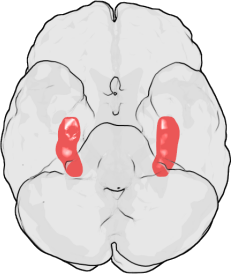You’re taking a trip to another country and you want to learn a basic vocabulary before you travel. Many argue that the sweet spot is about 15 new words a day. What brain x-training strategy – what ‘brainhack’ – can help you optimize this memorization process, ensuring that the words you learn are consolidated into long-term memory and are not forgotten.
A study has just come out that gives you one clear answer – an intervention strategy that is Specific, Measurable, Attainable, Relevant and Timely (SMART). And you can potentially use it for memorizing of any kind of information.
The science behind hard-wiring memories
It’s known that long-term memory requires a consolidation (hard-wiring) process that involves what are called ‘neuromodulatory factors” – such as dopamine, noradrenaline, and brain-derived neurotrophic factor (BDNF). Without the release of such factors around the time of information encoding, memories will decay rapidly.
It’s also known now that physical exercise stimulates the release of these factors.
This raises the obvious question: Can physical exercise be used to improve memory? And this is what a study published this week in Current Biology by Dutch researcher Eelco V. van Dongen and his colleagues at Radboud University looked at.
The experiment
There were 72 people in the study. They first all spent 40 minutes on a learning task (orange below). There were 90 picture-location associations that had to be learned in this time. For example a beach ball would appear in the middle right location (to be remembered). After this the ball is shown in the middle (the ‘cue’) and the task is to select the right location with a joystick. The ball is then shown in the correct position. This 3-step association learning procedure was done for 90 different pictures with different locations – over the course of 40 minutes.
The 72 people were then split into 3 groups:
- one exercised straight away
- the second performed exercise fours hours later
- the third did not do any exercise
The exercise was aerobic – 35 minutes’ cycling on an exercise bike up to 80% of their maximum heart rate.
When they were all tested on how much they had remembered two days later, the second group – the group doing the exercise 4 hours later – performed best. Interestingly there was no benefit of doing exercise straight away compared to doing no exercise at all. The timing of the exercise was critical.
fMRI brain images taken during the experiment revealed that there was more similarity of activation in the hippocampus between learning individual associations and correctly recalling the associations – indicating that the exercise was targeting the hippocampus.

The hippocampus is the part of the brain that I showed in a previous blog can grow new neurons as a result of exercise, the survival of which benefits greatly from both dual n-back training (e.g. DNB Pro) and brain training and focused attention (FA) meditation.
The memorization benefit
The benefit wasn’t huge – around 7-8%. But in practical terms it’s still useful. If you were typically succeeding in learning 15 new words a day, this strategy would result in learning an extra word a day – or around 30 extra words in a month.
Because of the practical benefit, Guillen Fernandez, lead researcher from the Donders Institute for Brain, Cognition and Behaviour, in the Netherlands, said:
“Our results suggest that appropriately timed physical exercise can improve long-term memory and highlight the potential of exercise as an intervention in education and clinical settings.”
He added that exercise was particularly effective for consolidating weak memories.
What you can do to optimize your learning?
This intervention is straightforward. Simply do aerobic exercise 40 minutes after trying to learn new information. Make a habit of scheduling your exercise for this time after periods of intense study.
Limitations of this brain cross-training strategy
This kind of x-training should benefit learning of new information (what cognitive neuroscientists call ‘declarative memory’). It is not apparently optimal for learning new skills (what cognitive neuroscientists call ‘procedural memory’).
For learning new skills (e.g. grammatical constructions, sports, learning an instrument, etc), the evidence suggests that exercise should closely follow the learning phase for maximum memory benefits. This is consistent with brain training and FA meditation benefiting from immediate exercise (see video blog below).
Moreover, we do not know yet whether the 4 hours interval is a restricted one, or whether memory may benefit from exercise taken e.g. 6 or 8 hours after the learning session. But we know that at least a 4 hour interval works!
Brain Training, Meditation and Exercise Strategy
For those of you interested in the meditation/brain training and exercise combination, you should see this short video I created.
Reference
van Dongen et al. (2016). Physical Exercise Performed Four Hours after Learning Improves Memory Retention and Increases Hippocampal Pattern Similarity during Retrieval. Current Biology, DOI: 10.1016/j.cub.2016.04.071
